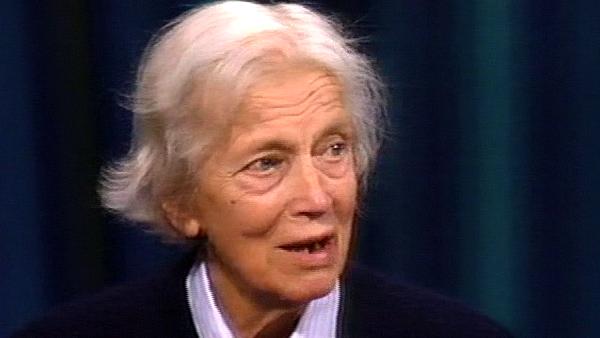NEXT STORY

Choosing not to work on defence against chemical warfare
RELATED STORIES

NEXT STORY

Choosing not to work on defence against chemical warfare
RELATED STORIES



|
Views | Duration | |
|---|---|---|---|
| 11. More help from my cousin Sir Charles Harrington | 1 | 147 | 02:25 |
| 12. Pink teeth | 189 | 04:30 | |
| 13. Crystallography at Oxford University | 225 | 06:14 | |
| 14. Work on thallium with HM Powell | 139 | 02:30 | |
| 15. Working with JD Bernal in Cambridge | 263 | 04:09 | |
| 16. Photographing pepsin crystals | 206 | 04:54 | |
| 17. The beginning of my rheumatoid arthritis | 318 | 01:32 | |
| 18. Sharing a research student with JD Bernal | 155 | 01:29 | |
| 19. Choosing not to work on defence against chemical warfare | 171 | 01:49 | |
| 20. My first insulin crystals | 201 | 02:20 |


Bernal had been... had moved from Cambridge to being professor at Birkbeck in London and he had been called up by the... I can't remember which ministry it was, anyway it was Anderson, to advise about air raid precautions at Amersham quite near Oxford. And after a time he had called up his research student, Harry, whom he had given to me in the interval, to work on air raid precautions too. Harry worked on sterols which had to begin with on cholesterol iodide and then before the research was finished or his DPhil completed, he went to work with Bernal on the air raid precautions problem and he did the remaining calculations of cholesterol iodide in the train from... using just log books and so on that he carried with him.
British pioneer of X-ray crystallography, Dorothy Hodgkin (1910-1994), is best known for her ground-breaking discovery of the structures of penicillin, insulin and vitamin B12. At age 18, she started studying chemistry at Somerville College, Oxford, then one of the University of Oxford colleges for women only. She also studied at the University of Cambridge under John Desmond Bernal, where she became aware of the potential of X-ray crystallography to determine the structure of proteins. Together with Sydney Brenner, Jack Dunitz, Leslie Orgel, and Beryl Oughton, she was one of the first people in April 1953 to see the model of the structure of DNA, constructed by Francis Crick and James Watson. She was awarded the 1964 Nobel Prize in Chemistry and is also known for her peace work with organisations such as Science for Peace and the Medical Aid Committee for Vietnam. All recorded material copyright of The Biochemical Society.
Title: Sharing a research student with JD Bernal
Listeners: Guy Dodson
Guy Dodson studied chemistry and physical science at the University of New Zealand, followed by a PhD on the crystallographic study of an alkaloid. In 1961, he came to Oxford to work on the crystal structure of insulin. In the mid 1970s Guy and his wife moved to York University to establish a laboratory. In addition to insulin studies the laboratory has investigated many complex molecules of medical significance, including haemoglobin, myoglobin, HIV related proteins, proteases and proteins involved in managing nucleic acids in cells. In 1993, he went to the NIMR in London to establish a crystallographic group in an environment that spanned molecular, physiological and disease-related disciplines. Here his research began on some cell signalling proteins. His interests on medically relevant proteins included prions, malarial and TB proteins, and some clinically relevant thrombin inhibitors. Guy Dodson retired in 2004 but is still finding much to do in York and the NIMR.
Tags: JD Bernal
Duration: 1 minute, 29 seconds
Date story recorded: 1990
Date story went live: 02 June 2008